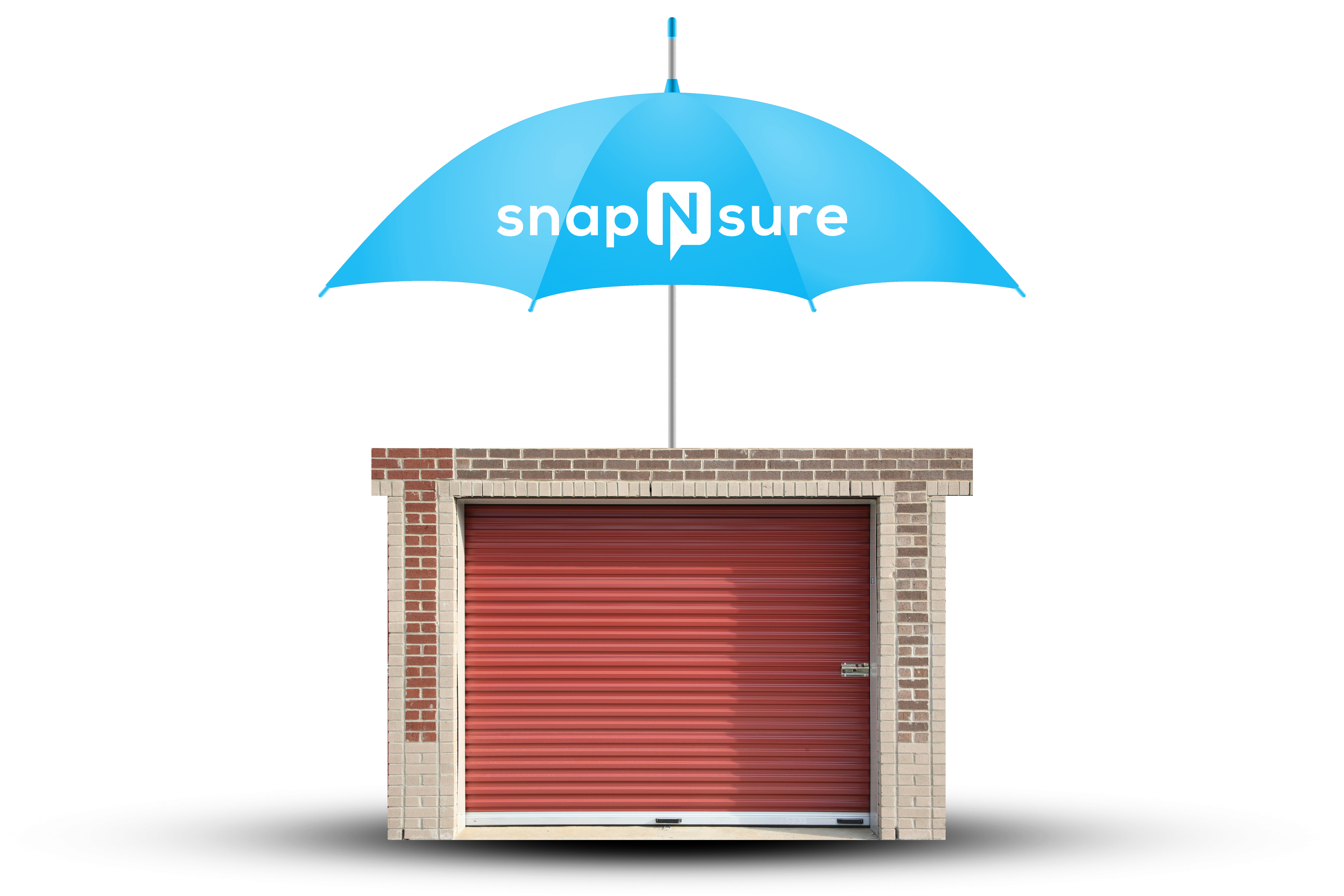 We’ve spoken here often about the dangers of renting a self-storage unit without first adequately insuring the precious belongings that you’ll be putting into it.
We’ve spoken here often about the dangers of renting a self-storage unit without first adequately insuring the precious belongings that you’ll be putting into it.
If a disaster strikes and you don’t have comprehensive insurance coverage for your valuables, the cost of replacing or repairing them will have to be met by you, and you alone. And for items that simply can’t be valued in terms of money, there’s the emotional loss associated with having personal collections, family heirlooms or keepsakes wrecked or stolen.
These dangers are particularly acute if you’ve chosen to protect your items in self-storage under an insurance policy offered by the storage facility. Policies like this are notoriously:
- Expensive,
- Lacking in any actual coverage,
- Laced with loopholes permitting the storage facility to renege on making any payments, and
- Disappointing, in the size of any payments that are actually made.
Self-storage customers who rely on their existing homeowners or renters insurance policy to keep them covered may also face disappointment, when incidents occur.
In this article, we’ve assembled some real-life horror stories, to illustrate just how true this is.
Self-Storage Insurance Claims – At the Mercy of the Waters
A case of “Don’t assume that your renters insurance will cover everything – because maybe it won’t” caught out New Jersey resident Scott Packwood, when he rented a self-storage unit while in the process of selling his home in Somerset, and moving to new digs.
In March 2014, Packwood entered a rental agreement with a major storage facility operator in Monmouth Junction, declining to pay extra for their in-house policy on the assumption that his existing renters insurance would be enough.
Monthly rental charges were increased in October of that year, supposedly due to an “escalation of costs” and “property maintenance.” None of this maintenance was in evidence on March 11, 2015, when Packwood entered his unit to find the floor covered in water, and what he estimated to be around $7,500 in damage to his stored furniture and other items.
Photos of the damage taken on the scene by both Packwood and the storage facility manager, plus a tour of the site, revealed holes in Packwood’s storage unit and other units around the facility – and the presence of a gutter downspout directly across from Packwood’s unit that was ideally positioned to spout loads of water into it, in the event of rain and snow melts.
But most significant of all was the simple fact that Packwood’s renters insurance policy didn’t cover his property against water damage – the second-highest cause of property loss for self-storage users. So when the storage facility management made him a final offer of $1,000 in compensation, Packwood turned to the consumer advocacy website Bamboozled, to take up his case.
That case is still ongoing – and Packwood is still out of pocket from losses due to property damage, and expenses with his lawyer and insurance adjuster.
Self-Storage Insurance Claims – Ravaged By Fire
When 911 emergency responders sent a team to a fire at a storage facility on Milwaukee’s northwest side in November 2015, Casey Dorsey was one of three customers whose property suffered extensive damage in the blaze. Evidence suggests that the fire was started when intruders used a blowtorch on the lock of a unit they were trying to rob.
Speaking to FOX6, Dorsey and others claimed that the management of the storage facility allegedly demanded their next month’s rent before even allowing renters to get access to their remaining belongings. Units that were open but relatively undamaged by the fire, were ransacked – and Dorsey lost an estimated $3,000 worth of property.
A few days after FOX6’s Contact 6 spoke with the storage facility manager, Dorsey received a letter offering him a little over $1,700. He was lucky.
A lawyer for Contact 6 reviewing the company’s standard contract confirmed that the document says that renters can’t make a claim against the storage facility even if their belongings are damaged through negligence of the company or its employees. Customers are advised not to store anything valuable “including things that are sentimental or have emotional value.” And even if they sue the company, the maximum in damages they can expect is $5,000.
Self-Storage Insurance Claims – Pestered By Pests
One of the main criteria in evaluating the physical environment of a storage facility is the lengths they go to in protecting units from insects, rodents, and vermin. If these measures aren’t good, self-storage customers may easily find their belongings overrun by four and six-legged vandals.
Late in 2017, Halifax, Nova Scotia resident Scelonia Rutherford and her partner learned this to their regret, when a rodent infestation at the self-storage facility where they were keeping household goods while moving residences caused around $5,800 worth of damage. They also had to forfeit the $400 in rental fees which had already been paid.
Describing the state of her unit just a month after renting it from a storage facility in Bayers Lake Business Park, Scelonia Rutherford said:
“The smell. The smell was just outrageous.… We were just totally shocked,”
“There was a lot of rodent droppings on our items — furniture, bed, clothing, everything. When we mentioned it to the customer service rep, she told us it could be washed out. We took offense to that.”
Presumably to determine how much compensation to pay, the storage company asked for an itemized list of what had been removed from the storage unit intact, and what had to be discarded at a local dump site (whose management also requested an itemized list). Three weeks later, the storage facility emailed Rutherford a one-time offer of $1,000.
This offer was withdrawn a few hours after the storage company was contacted by Canadian broadcasters CBC News, to whom Rutherford had reported her misfortunes.
Notably, while the company’s website says there’s a $10,000 insurance policy to cover loss in the units from theft, fire or flood, this doesn’t include damage caused by vermin. And things aren’t really getting any better for self-storage consumers, elsewhere.
A report from May 2018 by NBC 5 News cites one of the largest self-storage companies as putting a cap of $250 on the pay-out on any policy taken out with them, for damage due to vermin, no matter how much coverage you buy. U-Haul’s in-house insurance plan, SafeStor, offers no rodent coverage at all.
Self-Storage Insurance Claims – Victims of Theft
In this video report from CBS SF on YouTube, Julie Watts investigates the claims of customers who have been having trouble getting payment on their theft insurance claims, after break-ins at their storage units. You may have noticed that several of the nightmare stories detailed here involve a large storage company, which has been the subject of much litigation since 2010.
The Comments section beneath the video panel also features tales of woe from viewers who have had similar experiences.
Self-Storage Insurance Claims – Generally Vulnerable
Before completing a rental contract, most storage facilities require their customers to maintain insurance for the full replacement cost of the contents in their storage units – and they’ll ask to see a copy of a homeowners, renters, or third-party insurance policy, before signing on the dotted line.
But most storage facilities will also place limits on the value of items that can be stored in their units. And these limits are typically based on the physical size of the storage unit. So if you place a lot of valuable stuff in a small unit, the company will only compensate you for a small amount – even if you buy a lot of insurance.
Case in point: Erik, of Carlsbad, California, rented a small unit at a well-known storage facility, but made the mistake of storing valuables in it. In his words:
“Apparently, these people do not lock up the unused units and the walls are made out of dry wall… Someone had come in and broke through my wall and taken over $5,000 worth of guns, my fishing poles, and countless tools. After calling the police, the staff admitted to letting homeless people sleep there and [said they] were “planning” to ‘evict’ them.”
And On Rocky Legal Ground
In some instances, the “insurance” sold by self-storage facilities as a condition of their rental agreements isn’t insurance at all, in the legal sense. For example, Article 16.3 of the California Insurance Code (entitled “Self-Service Storage Agents”) states that:
“A self-service storage facility . . . shall not offer or sell insurance unless it has complied with the requirements of this article and has been issued a license by the commissioner as provided in this article.”
A failure to comply with this requirement led to the breakdown of a case first filed in 2012 by Samuel Heckart, who rented a unit from a well-known storage facility under a so-called “protection plan” which charged customers $10 per month for coverage against damage including “Fire, explosion or smoke… Theft, vandalism or malicious mischief… Roof leak or water damage… and Windstorm that first causes damage to the building.” All to the tune of $2,500 as the maximum possible pay-out.
Heckart signed a rental agreement with the facility and was automatically “enrolled” in the protection plan, after he failed to provide proof of his own insurance. He subsequently brought a class action lawsuit against the storage company.
After several years, judgment was issued against him by the California Supreme Court on April 23, 2018. The reason? By legal definition, the storage company’s protection plan isn’t actually insurance, and was therefore not subject to regulation under the Insurance Code.
If You Decide to Use Self-Storage to Declutter Your Home, Make Sure you Insure Your Belongings in Storage with SnapNsure™
The best way to avoid becoming a character in any of the nightmare stories above is to take out a comprehensive program of self-storage insurance with a reputable independent provider – before you enter into any rental agreement with your storage facility.
The SnapNsure™ Contents Program can be purchased directly through the SnapNsure™ website, allowing savings of 50% to 70% per month compared to other plans. And it offers some of the most comprehensive self-storage insurance on the planet – including options for specific incidents coverage against Named Storms, Flood, Rodent, and Earthquake.
When it comes to pricing, coverage, convenience, and reliability, the SnapNsure™ Contents Program is the best choice as a student to address all of these concerns. Coverage plans range from a minimum of $2,000 up to a maximum of $25,000 of coverage per unit.
It is simply the best self-storage insurance on the market (see our blog on self-storage insurance explained).
SnapNsure™ is the only company in the U.S. offering all of these coverages together – and the only company offering Named Storm coverage for self-storage at all.
SnapNsure™ is a “direct-to-consumer” product with no middleman, SO YOU WILL SAVE MONEY over the insurance offered by self-storage companies! Our premiums are typically 100% to 200% lower for the same coverage limits offered at the storage facility (storage facilities typically mark up their premiums, with a sizable profit going straight to the storage company).
And every SnapNsure™ policy has a standard $100 deductible.
Coverage renews every month upon payment of your SnapNsure™ premium. It starts as soon as your completed application is received electronically by the SnapNsure™ website – so you can even purchase coverage on your cell phone as you’re signing the storage facility’s rental contract. And you can cancel at any time. Simple right!
SnapNsure™ is underwritten by The Hanover Insurance Group – the holding company for one of the largest admitted insurance carriers in the United States.
It simply makes sense to get the coverage you need from SnapNsure™. Get Insured now!








